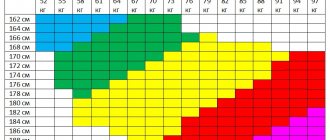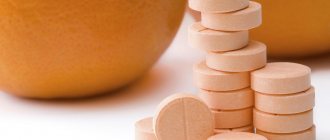Benefit
- Safety.
The fact that the bar moves along the guides, eliminating the very possibility of getting hit on the crown with a projectile, reassures beginners. Yes, and you can put the barbell on the clamps at any time during the exercise, simply by turning the bar with the force of your hands.
- High level of insulation.
Due to the fact that the machine is equipped with guides, we do not need to stabilize the barbell with additional muscles (stabilizers). Therefore, it is easier for us to work the target muscle.
- Explosive reps.
In our body, muscle fibers are divided into two types: fast muscle fibers (white) and slow muscle fibers (red). This division is not accidental; it is done so that movements of different severity can be performed. In practice, fast-twitch muscle fibers (FMF) do the heavy work, and slow-twitch muscle fibers (SMF) do the light work.
The most effective training is using two types of fibers. This type of training is called pumping .
Traditionally, pumping refers to performing an exercise for a large number of repetitions (provided that the muscle is previously tired with heavy, basic exercises), thus we fill the muscles with blood (“inflating” it), provided that the rest between approaches is very short. It is due to this that more blood enters the muscle than it can pump out, so the muscles swell and become huge. This feeling cannot be confused with something else.
Using this explosive repetition technique works well with the Smith Machine because... When pumping in squats with free weight, the risk of injury increases critically.
- Performing unilateral (one arm or leg) exercises .
- The ability to quickly master all the basic exercises and build a muscle frame and then move on to free weights.
An article on how to punch the gluteal muscle is here .
Features of squats in the Smith machine and their advantages
The specificity of the unit lies in the stable position of the supports on which the bar is horizontally mounted. Thus, during the exercise, the body always remains in one position, without bending to the sides.
Smith squats have a number of undeniable advantages:
- suitable for sports training of both men and women;
- are good practice for mastering squat technique before moving on to free weights;
- do not require the constant presence of a person nearby for backup;
- provide stability when performing exercises even with a heavy load;
- acceptable for problems with the knee joint, lower back;
- allow you to create highly effective training schemes for different muscle groups;
- the likelihood of injury or sprain is minimal.
What muscles work
- targeted (main) – quadriceps femoris muscle;
- synergists (assisting) – gluteus maximus, adductor magnus, soleus muscles;
- dynamic stabilizers – muscles of the back of the thigh, gastrocnemius;
- stabilizers – spinal extensors;
- antagonists stabilizers – rectus/oblique abdominal muscles.
Good morning for gorgeous buttocks: bending over with a barbell on your shoulders
Common mistakes
- You are afraid to move your pelvis back enough. It turns out that when you squat, you move a little forward from under the bar. In this case, the load on the spine sharply increases. You may injure him. Smith squats will prevent you from falling, don't be afraid to stand correctly. Just do it and you will understand everything yourself.
- As a consequence of the previous mistake, your knees extend too far beyond your toes. In general, the load is distributed not along a physiologically correct straight line (through the whole body), but partially on the spine and knees. In addition to lower back injuries, you can also damage them.
- Elbows do not point up. In fact, not everyone can hold their elbows in this position. For some this is very difficult. Especially for girls. If you can't do this, bring your shoulder blades as close to each other as possible and grab the bar tightly to anchor your body under it.
- You are afraid of falling and do not lean on the bar. In this case, you stand directly under the barbell and try to do the exercise. From the outside it looks extremely disgusting, and your body is under a harmful strain. As you understand, in this case it is impossible to talk about pumping up the quadriceps and buttocks. If you do not have a competent partner or trainer (he may be busy at this moment), pay attention to your pelvis. If he moves back and forth during the squat, you are standing directly under the barbell. Step forward and lean on the bar.
- A common mistake people make with an inelastic Achilles tendon (the one that runs from the calf to the heel) is squatting on their toes. Although the Smith machine avoids many injuries, in this case it can cause damage to the joints of the body.
Execution technique
The trajectory of movement is initially set by the simulator, but, of course, the exercise has some nuances.
- Go to the Smith machine, set the desired weight and step into the machine, placing the bar on the bottom of the trapezius (slightly below the neck).
Using a slightly wider than shoulder-width grip, unlock the machine by releasing the weight from the hinges and taking a small step forward. Bring your shoulder blades together, position your legs slightly wider than your shoulders (spread your toes slightly to the sides), straighten your back (statically tighten the rectus abdominis muscle, the so-called “abs” ), and direct your gaze forward.
- Inhale and begin to slowly lower the bar and bend your knees. Don't slouch your back. Lower yourself to an angle of 90 degrees (or slightly lower), while watching your knees, they should not protrude too far beyond the plane of your feet. You need to go down with the weight slowly, controlling the weight of the bar at each point.
In fact, if you don't squat to at least parallel, your glutes don't work much. Ideally, you should strive to squat as deep as possible, almost with your butt to the floor, BUT!!! This is strictly prohibited in Smith . At all. Why? Read below.
- Having reached the bottom point, begin to rise up, pushing off the floor with your heels and straightening your legs. Return to the starting position, exhaling with effort. Repeat the specified number of times.
Dream butt: glute swings and Bulgarian lunges on one leg .
Smith machine - how to use?
To get maximum benefit, you need to know how to use the device. The Smith Machine simulator requires learning the following information:
- You can’t start training without thoroughly preparing your body for the load.
- It is important to monitor the position of the body, controlling the movements of the simulator.
- The bar at the starting point is placed 5 cm above shoulder level.
- The legs are placed in line with the bar or slightly forward.
- During squats, your knees should not go beyond your toes.
Options
In theory, by changing the position of the legs, you can change the emphasis of the load on the necessary muscles.
Frontal
Front squats (or hack squats) are a more relevant technique for men. When squatting with a narrow leg stance, the load is shifted to the outer part of the quadriceps (lateral head).
Front squat technique in a simulator for men:
Go to the Smith machine and, with your arms crossed, mark the exercise bar on them. Elbows should be strictly parallel to the ground. The feet are under the shoulders, and the toes are turned 30-45 degrees. Tighten your abdominal muscles and only after you feel confident enough begin the movement. Keep your back straight and slowly lower yourself until your thighs are parallel to the ground. Push through your heels and return to the starting position.
The working weight when performing front squats is less than in classic ones!
Sumo
When wide , the load is greater on the inner surface of the thigh (adductor muscles).
Plie
With the legs brought forward onto the buttocks
For girls: how to squat with an emphasis on the buttocks? Usually it is this technique of execution that is meant by the squat for girls in the Smith machine. To specifically work the gluteal muscles, your legs need to be placed a little further and your feet hip-width apart. This is the most dangerous and most unphysiological option for performing a squat in a simulator for women; it is difficult to imagine such a perdimonocle in life: sit down while moving your legs forward. In addition, with any positioning of your legs, you “block” your joints in a straight path, which never happens in life.
This is just some special form of perversion. Doing plie in Smith is very inconvenient and practically impossible. We do not recommend this option to you. Read: How to effectively pump up Madame Sizhu: plie and sumo squats
Dream Butt: Romanian Deadlift and Glute Bridge .
Types of squats
On the Smith machine you can experiment with different variations of squats, which may, although not significantly, differ from the basic movements. Depending on how the legs are placed, the level of load on specific leg muscles depends. For example:
- Feet are placed together. In this position, the maximum share of the load falls on the front parts of the quadriceps of the thighs. Slightly less load is distributed across the knees. This option is suitable for those with healthy knees.
- Feet are placed shoulder-width apart. As a result of squats, the main load is distributed along the lateral parts of the thighs and their inner surfaces. This option is more suitable for girls.
- Squats with legs wide apart are also practiced more by girls. Here the main load acts on the inner thighs.
To develop the buttocks, you can put your legs slightly forward and rest your back on the bar. At the same time, you should be afraid of losing your balance. The design features of the Smith simulator do not allow this.
It should be noted that there are other squat options used by athletes. For example:
- Squats from your knees. It is considered a fairly heavy exercise, which is used in powerlifting and weightlifting. It is intended for better development of the lower phase of squats with a barbell. Such movements allow you to develop large muscles, as well as some smaller muscle groups that are inactive under classical loads. Squatting on your knees does not allow you to build muscle mass, but it does have a complex effect on the muscles. This exercise is characterized by maximum load on the knees. Therefore, this exercise is not suitable for beginners. For less stress on your knees, it is better to use soft knee pads.
- Front squat with barbell. Its difference is that the barbell is not located on the back muscles, but on the chest muscles and deltoid muscles. As a result, the back will take a purely vertical position, which radically changes the load on all muscle groups. Although the exercise is rare, it is effective and allows you to work out not only your legs, but also your upper body. In addition, strong abs are formed.
- Pique or sumo squat with wide legs. In this position, the load on the quadriceps is minimal, but the load on the inner thighs is maximum. Your legs should be spread as wide as possible, with your toes pointing to the sides at an angle of 45 degrees. At the same time, you need to make sure that your knees do not bend inward, and that your abdominal and buttock muscles are tense.
Squats with lunges. This is a classic version of squats, but with one difference: one of the legs moves forward. You should squat until your thigh and shin form a right angle. After this you need to raise your torso. In such conditions, the maximum load falls on the front leg. After each squat, the leg must be changed.
With free weights or in the car?
Is there any harm from squatting in Smith? There are quite a few!
- Even based on the advantages described above, the motto of exercises (especially squats) in the Smith machine emerges by itself: goodbye, stabilizers ! So what, you say. And we will answer: if you exercise on such machines, the stabilizers will lag behind the main muscle group in growth.
- Questionable effectiveness.
Research published in the journal Strength and Condition Research (2013) tells us that muscle EMG activity during the free weight squat is 43% higher than the Smith squat. Electromyographic activity was 34%, 26%, and 49% higher in the gastrocnemius, biceps femoris, and vastus muscles.
Conclusion : why settle for a smaller effect?
- Rod movement trajectory.
Smith can be good at the beginning of your journey , when you are still learning. When you don't have to concentrate on maintaining your balance, you can pay more attention to other important nuances like the position of your feet, the direction of your knees, your chest raised, your shoulder blades pulled together, and holding your breath in a timely manner. And in principle, you should first pump up your back and achieve a certain tone of the body muscles before diving under the barbell.
But always remember: Smith is a crutch and you don’t need to walk with it all your life, if you have healthy limbs. Over time, when the working weights become larger, the straight trajectory of the bar movement in the Smith machine will put the knee and shoulder joints, as well as the lower back, in an unnatural position, no matter what you do - presses, rows (although it is a complete perversion to do these exercises in the Smith machine) or squats. This will be especially dangerous in the squat for girls for the buttocks.
Additionally, Smith machine squats develop poor squatting technique , which can lead to serious injury when transitioning from this exercise to a barbell squat. To learn how to squat to develop your glutes, read “The Ideal Squat for Your Glutes and Firm Butt”
- The risk of injury is increased.
The first blow is taken by the spine, because an axial load is created on it. If you have scoliosis, osteochondrosis, etc., perform it only with the permission of a doctor! But you can overdo it so much that a completely healthy spine becomes not very healthy.
Two main rules:
- ⛔You can’t squat, deliberately bringing your knees behind your socks (to specifically put a load on the buttocks)!
⛔You can’t squat “to the floor”!
- Lack of real strength progress.
The Smith machine gives you false sense of strength gain, and that's because it does all the stabilizing work for you. During the exercise, the power rack helps you by relieving the load on the small muscles of the stabilizers. As a result, they are excluded from work and are not pumped (stagnant). You can supposedly increase your performance (working weights), but in fact, when you switch to a squat with free weight, this progress will be insignificant or there will be no progress at all.
In these cases, the load is distributed unevenly and hits the kneecaps . The danger is that this is a time bomb that will make itself felt, if not today, then the day after tomorrow for sure.
When working with heavy weights, it is almost impossible . And most often the knees come into play again: helping ourselves to lift the weight, we often turn our knees inward. And this is the certain death of your joint.
The knees always “look” in the same direction as the socks. Squat with your legs parallel – your knees are parallel. Turn your toes outward - your knees look strictly apart.
Pointless and merciless exercises of fitness girls: kneeling squats (on knees)
Other Squat Variations
Below are other options for exercises on the Smith machine.
Smith Front Squats
They are used mainly as an auxiliary workout and abdominal tightening.
How to do it:
- Hands crossed in front of you. The projectile is located on the forearms.
- The back is in an upright position, the chin is raised.
- A smooth squat is performed, then a rise.
Number of repetitions – 8-12 times.
Plie or sumo squats
The muscles of the inner thighs are actively involved in the work.
How to do it:
- The bar is supported at the back, the back is slightly tilted forward.
- Feet are spread as far apart as possible, knees and toes pointing out to the sides. The stomach is pulled in.
- A slow squat is performed, the buttocks are tense.
- Return to the starting point.
Repeat 12-16 times.
Squats and Lunges
Lunges allow you to work out the upper leg area more efficiently.
Correct execution of the exercise:
- Starting position – bar on back of shoulders.
- The right foot takes a step, the left foot rests the toe on the floor.
- A squat is done; there should be a right angle between the thigh and shin.
- Return to original position.
Lunges are done 8-10 times on each leg.
Pancakes under the heels
You probably paid attention to some super mega online trainers and part-time fitness bikini trainers - how they place small discs (“pancakes”) weighing up to 1.25-2.5 kg under the heels before squats. Beginners often copy such habits of their more “wise and sophisticated” owners of gorgeous asses, without even asking themselves why this is necessary. It is believed that this is better, just better, without details.
“The exercise is more effective, it seems that the gluteal muscles feel better, but I don’t know…”
It seems very similar to the opinion that small, frequent meals speed up metabolism











